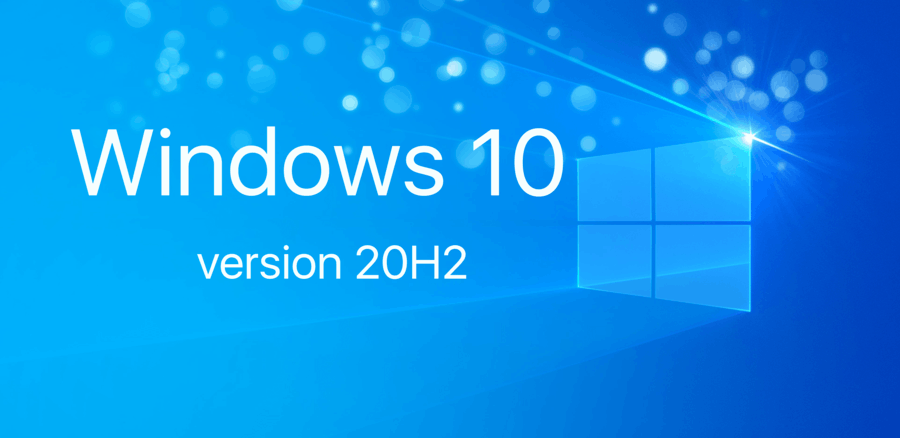Microsoft has released the next version of Windows 10, known as version 20H2 and featuring new changes and enhancements. Here’s a convenient list detailing everything new in the update.
Version 20H2 changelog

Windows Shell
- The Start menu now has a streamlined design that removes solid color backplates behind app logos in the apps list and live tile interface.
- Tabs in Microsoft Edge will now show up in the ALT+TAB interface.
- Pinned websites will now show all open instances when hovering over its icon on the taskbar.
- Notifications feature an updated layout with an X to dismiss notifications back into the Action Center.
Windows Settings
- System > About now features copy buttons that will copy your system specifications to your clipboard.
- There’s a new Local Users and Groups modern device management (MDM) policy that allows an administrator to make granular changes to a local group on a managed device, on par with what has been available to devices managed with on-prem Group Policy (GP).
Miscellaneous changes
- The new Microsoft Edge is now preinstalled.
- The touch experience is more optimized when in desktop mode.
- Focus Assist will no longer provide users with a summary of missed notifications when Focus Assist is turned off.
- Using your Microsoft Account, Windows 10 will now automatically pin Your Phone, Office, or the Xbox app to the Taskbar when setting up a PC running 20H2 for the first time.
- Improved support for non-ASCII file paths for Microsoft Defender Advanced Threat Protection (ATP) Auto Incident Response (IR).
Fixes
- Fixed an issue that causes error messages to display in the English US (en-US) language instead of in the non-English language you selected. This occurs when you install a non-English language pack before installing the latest cumulative update.
- Fixed the toast notification that appears at the restart when you update from Windows 10, version 2004.
- Fixed an issue that causes non-English strings to disappear, which might affect the text on the tiles of the Start menu.
- Fixed an issue that prevents you from using sharing functionality in Microsoft Office. This occurs when Conditional Access is enabled.
- Fixed an issue that occurs when a third-party application loads hidden tabs into Internet Options.
- Fixed an issue in Microsoft Edge IE mode that occurs when you open multiple documents from a SharePoint site.
- Fixed an issue in Microsoft Edge IE mode that occurs when you browse using anchor links.
- Fixed an issue with pasting mixed content of images and text from Microsoft Word into Internet Explorer.
- Fixed an issue that might cause Microsoft browsers to incorrectly bypass proxy servers.
- Fixed an issue in the Windows Push Notification (WNS) service that prevents you from selecting a virtual private network (VPN) interface to make outbound connections. As a result, you lose connectivity with the WNS service when forced tunneling is used.
- Fixed an issue that might cause the Magnifier to stop working in Microsoft Excel in certain scenarios. As a result, Microsoft Excel might also stop working.
- Fixed an issue that prevents you from installing some .msi apps. This occurs when a device is managed by a Group Policy that redirects the AppData folder to a network folder.
- Fixed an issue that might display 4K high dynamic range (HDR) content darker than expected when you configure certain non-HDR systems for HDR Streaming.
- Fixed an issue that causes new child windows to flicker and appear as white squares on server devices that are configured for stark visual contrast.
- Fixed an issue that causes the Settings page to close unexpectedly, which prevents default applications from being set up properly.
- Fixed an issue that causes all open Universal Windows Platform (UWP) apps to close unexpectedly. This occurs when their installer calls the Restart Manager to restart File Explorer (explorer.exe).
- Fixed an issue that prevents Windows 8.1 apps from projecting to a secondary display when those apps use the StartProjectingAsync API.
- Fixed an issue that prevents family safety features, such as time limits and activity reporting, from working on ARM64 devices.
- Fixed an issue with File Explorer’s preview of .msg files when Microsoft Outlook 64-bit is installed.
- Fixed an issue that causes a KERNEL_SECURITY_CHECK_FAILURE (139) stop error when Windows resumes from Sleep and turns on certain Bluetooth headsets.
- Fixed an issue that might prevent certain display driver reset utilities from properly reinstalling the same driver on the system.
- Fixed a reliability issue in WDF01000.sys.
- Fixed an issue that causes memory leaks when an application calls the CryptCATAdminCalcHashFromFileHandle() function. The leaked memory is reclaimed when the application closes.
- Fixed an issue that prevents some machines from automatically going into Sleep mode under certain circumstances because of Microsoft Defender ATP Auto IR.
- Fixed an issue that prevents some machines from running Microsoft Defender ATP Threat & Vulnerability Management successfully.
- Fixed an issue that prevents Microsoft Defender ATP from applying file exclusions in some cases, which leads to application compatibility issues.
- Fixed an issue in Microsoft Defender ATP that prevents some machines from reporting the installed applications to Threat & Vulnerability Management.
- Fixed an issue that causes automatic investigations to fail in Microsoft Defender ATP.
- Improves Microsoft Defender ATP’s ability to identify malicious code injection activities.
- Fixed an issue that prevents some applications from printing to network printers.
- Fixed an issue that might cause a printer to be a hidden device in Device Manager after a restart.
- Fixed an issue that might cause the Print Management console to display script errors when you enable the Extended View option.
- Fixed an issue that causes printing to fail in certain scenarios.
- Fixed an issue that might prevent a Windows 10 device from reaching the internet when using a wireless wide area network (WWAN) LTE modem. However, the Network Connectivity Status Indicator (NCSI) in the notification area might still indicate that you are connected to the internet.
- Fixed an issue that might prevent internet connectivity on some cellular modems after upgrading to Windows 10, version 2004.
- Fixed an issue that causes telephony applications to lose the first four digits.
- Fixed an issue with in-memory parity bitmaps that can cause data integrity issues on Parity Storage Spaces.
- Fixed an issue that prevents the creation of a storage pool using the Manage Storage Spaces in the Control panel.
- Fixed an issue that might cause the Microsoft Remote Assistance process (msra.exe) to stop working when a user is receiving assistance during a computer session. The error is 0xc0000005 or 0xc0000409.
Source WindowsCentral







Leave a Reply